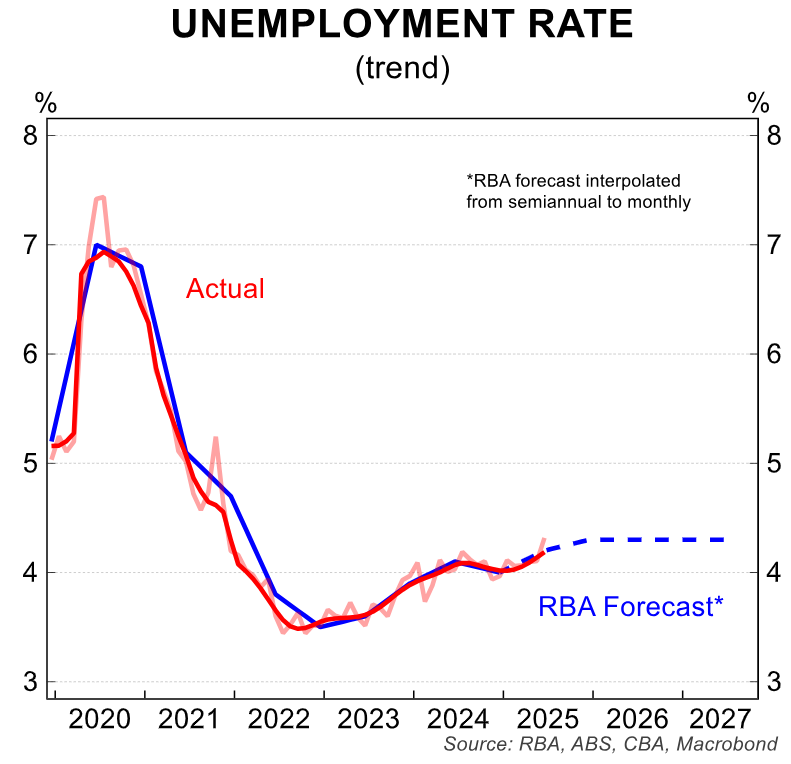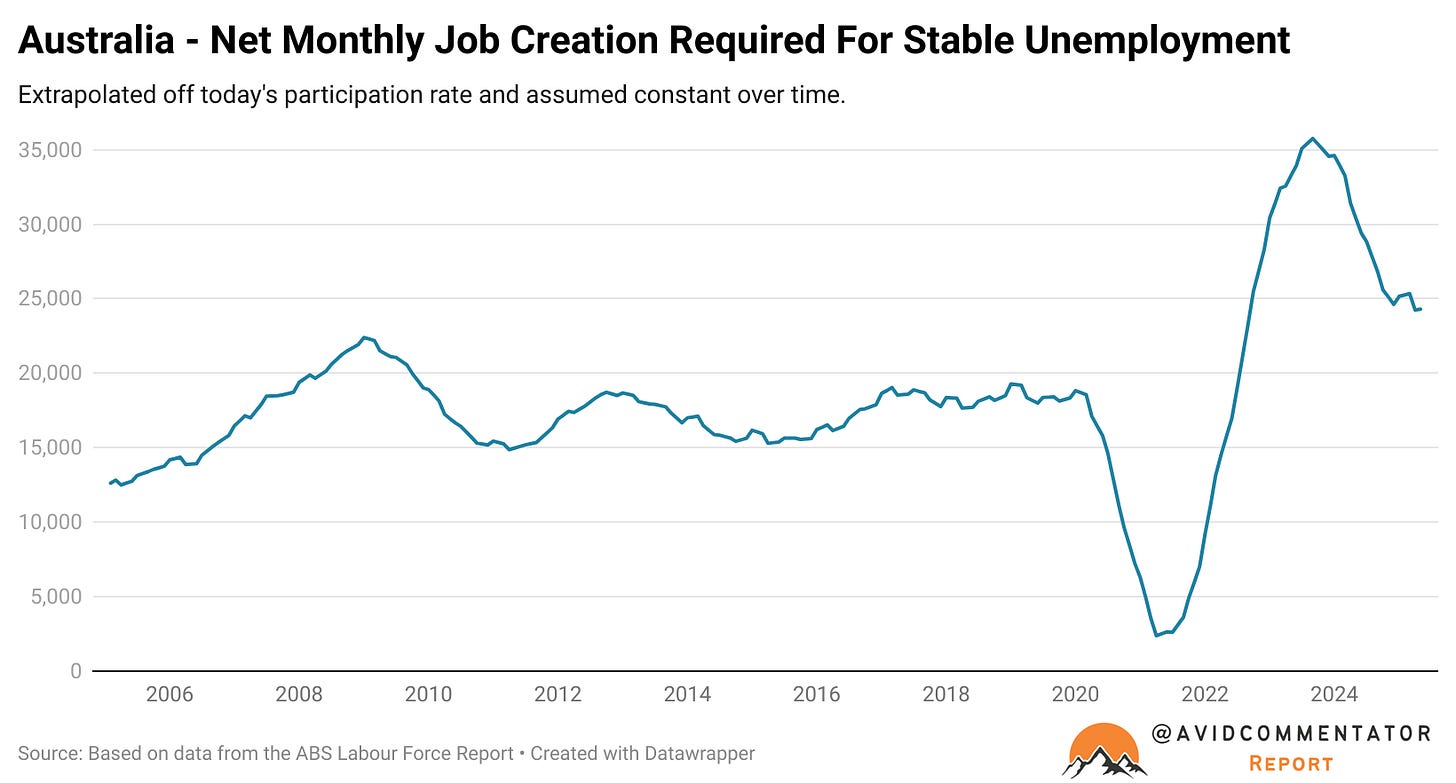When the RBA released its forecasts for the economy in May, their expectation was that unemployment would rise to 4.3% by the end of 2025 and remain there until mid-2027, the conclusion of the forecast period.
With the release of the latest labour force data for June, the nation’s unemployment rate arrived at 4.3% quite a bit earlier than expected, up from 4.1% for the previous month.

On a seasonally adjusted basis, the economy created just 2,000 jobs in June, significantly fewer than the average expectation of analysts at 20,000 for the month.
At a more granular level, the number of full-time jobs fell by 38,200, while the number of part-time jobs rose by 40,200.
Meanwhile, the number of hours worked in the month fell by 19 million, or 0.9%.
Overall, it was a weak report across the board, in a vacuum revealing a deteriorating labour market.
The Longer View
If we take a few steps back and assess the labour market over a longer-term time horizon, the news is somewhat better, but still far from what now equates to a passing grade.
In the last two months of data, the economy has created just 910 jobs. In the same time, the working-age population has grown by over 57,000 people.
If we shift our perspective back to January, arguably the annual conclusion point for the most volatile period of labour market, the picture improves somewhat, but still not enough to stem rising unemployment.
Since then, 57,100 jobs have been created, which is well short of the roughly 120,000 jobs that needed to be created over the same time for unemployment to remain stable, assuming a static participation rate.
Something Of A Silver Lining…Possibly
If there was one potential silver lining, it was that part of the deterioration was driven by a weak sample being rotated into the ABS Labour Force Survey data set.
Overall, there are eight survey groups as part of the ABS Labour Force Survey at any given time, with one rotated out each month and a new one rotated in.
In June, the group that rotated out had an unemployment rate of 3.9%, while the group that rotated in had an unemployment rate of 4.6%.
This certainly played a role in driving up the unemployment rate. However, this also raises some big questions.

Is this simply a statistical quirk that will feed through the data, or is it a case of the labour market deteriorating more rapidly than expected beyond the prior scope of the ABS Labour Survey? Or is it something in-between?
The Outlook
In recent years, there have been significant revisions within the ABS Labour Force survey, with sizable revisions to the unemployment rate and even the working-age population seen in several notable instances.
What is different in this instance, however, is that so far, at least, the ABS Labour Account is also reflecting serious levels of weakness.
The surge in unemployment to the top of the RBA’s forecast range came as a surprise, but if the pullback in government-funded employment growth is to be sustained, it may be just the beginning if the market sector of the economy fails to adequately refire.
The RBA’s forecasts have long reflected the much-hoped-for “soft landing” for the labour market. But whether it will be able to manage it in the face of the main driver of employment growth potentially exiting the building is well and truly up in the air.

